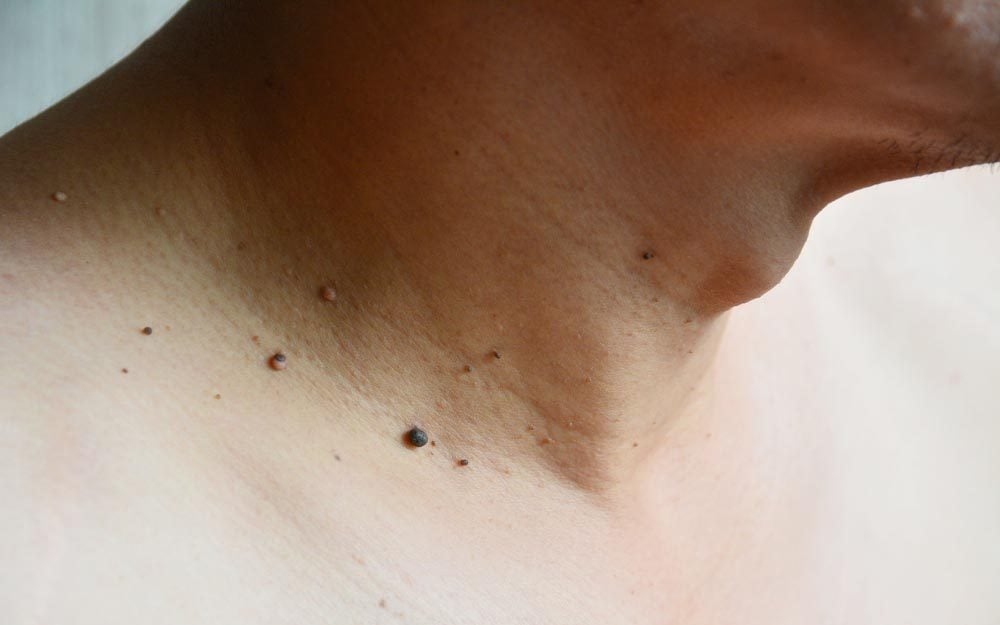Dermal problems are increasingly common in today’s fast-paced world. Skin tags—also known as acrochordons—are one of these conditions, often affecting people with less-than-ideal lifestyle habits.
Skin tags are more likely to appear in obese, insulin-resistant, or hormonally changeable individuals. While noncancerous, they may nonetheless be annoying because they can become entangled on clothing or irritated by rubbing.
Due to this, many people choose to have them eliminated—either professionally or with home treatments. But first, it is helpful to know the facts about these small growths and dispel the numerous myths that have surrounded them.

1. Skin Tags Have No Muscle
A skin tag consists of skin tissue, fat cells, nerve cells, and ducts—but no muscle fibers. They tend to appear as small outpouchings of skin. Though harmless, their presence in visible locations can have a negative effect on confidence and self-esteem.
2. Skin Tags Do Not Shrink on Their Own
Skin tags do not go away on their own. If you would like them to be gone, then they will need to be removed—either surgically or naturally. Some common professional treatments are excision, ligation, freezing, and laser treatment.
3. Skin Tags Can Be Frozen
Cryotherapy is also one of the fastest non-surgical methods to remove a skin tag. A dermatologist will freeze the tissue with liquid nitrogen, which contracts and drops off in around a week. You also have at-home freezing kits that you can do yourself, although it is always better to be careful.
4. Skin Tags Are Non-Cancerous
It’s natural to feel alarmed when something grows on your skin, but skin tags are benign and don’t typically pose a medical threat. They’re usually removed for cosmetic reasons or because they’re prone to irritation. If a tag bleeds or changes in appearance, see a healthcare professional to rule out other conditions.
5. Skin Tags Can Hurt If Injured
Normally, skin tags are not painful. However, if they become caught, pulled, or rubbed over and over again, they may cause pain and bleed a great deal. Do not scratch or pick at them to avoid causing injury.
6. Skin Tags Frequent Development in Middle Age
These growths increase as a person enters middle age, due partly to changes such as weight gain, insulin resistance, and hormonal changes that develop over time.
7. Skin Tags Typically Develop in Skin Creases
They are likely to grow where skin touches skin, such as the neck, eyelids, armpits, under the breast, and the groin. Moisture and friction in these areas are responsible for their growth. Keeping oneself clean and avoiding friction can prevent them.
8. Skin Tags Must Not Be Removed with a Razor at Home
It may look simple to cut off a skin tag with scissors, but it can lead to bleeding, infection, and unnecessary discomfort. If you want one removed at once, see a dermatologist. A professional will anesthetize the area prior to removal and can prescribe antibiotics or pain meds if necessary afterwards.
9. Skin Tags Can Be Removed at Home (With Caution)
If professional treatments seem daunting, you can try safer home options. The TagBand kit, for instance, includes tools to ligate the tag and allow it to naturally fall off.
Other individuals attempt homeopathic treatments such as apple cider vinegar, iodine, tea tree oil, garlic, or oregano oil. Be sure that these home remedies take a while to be effective and need regular application to slowly break down the tissue.
Final Thoughts
Skin tags are a frequent and harmless occurrence, but that doesn’t mean you need to tolerate them if they annoy you. Professional removal or a subtle approach at home, whichever you prefer, having the facts on your side can assist you in making an informed decision for your skin and peace of mind.
Also Read : Top Ingredients to Avoid in Skincare Products for Healthier Skin



